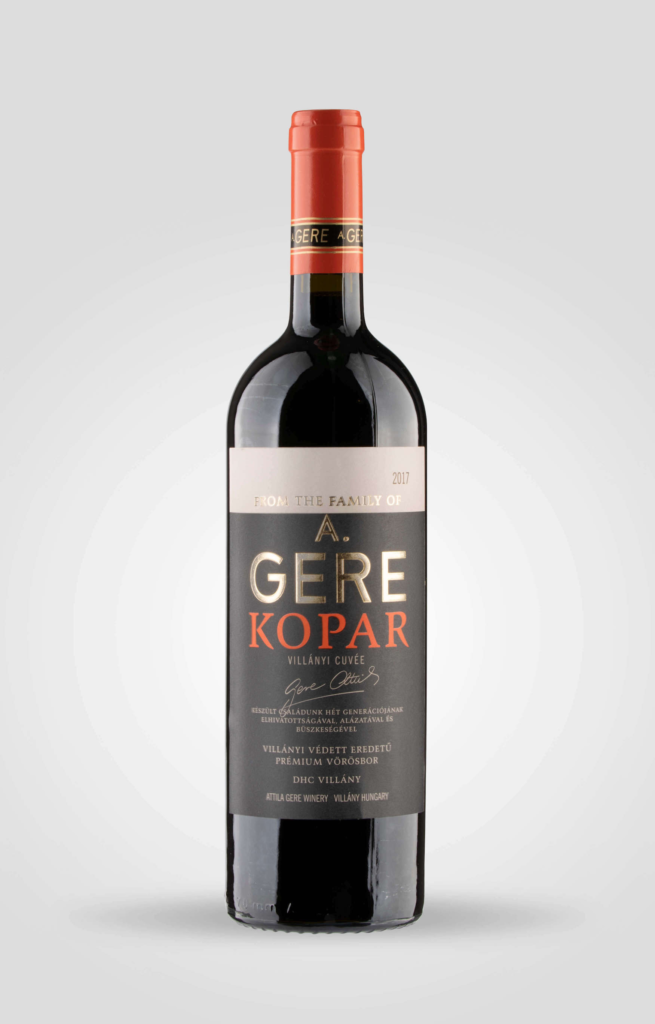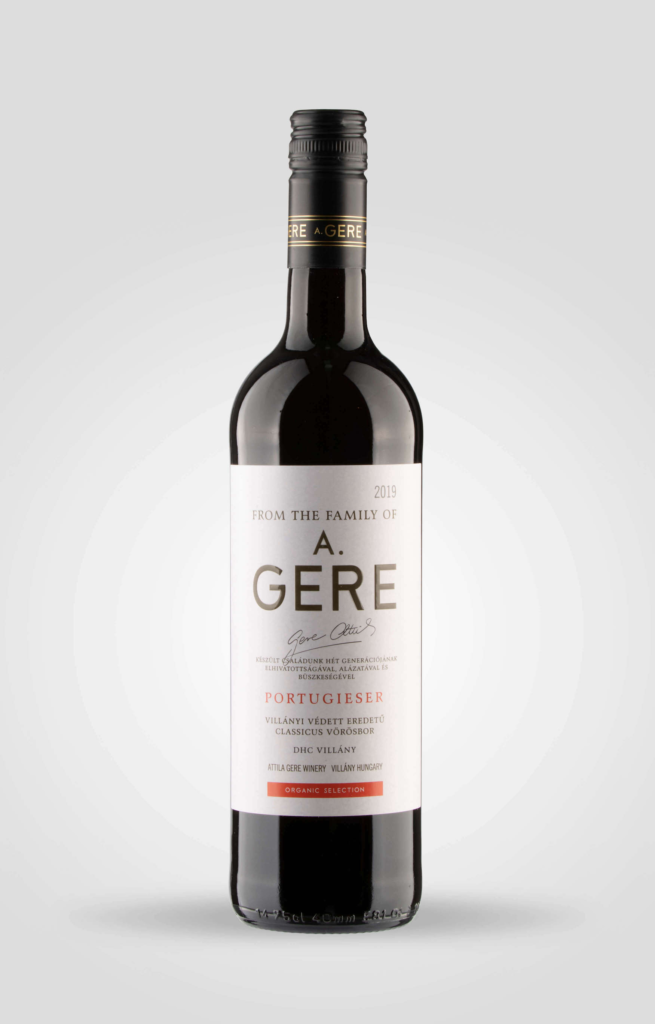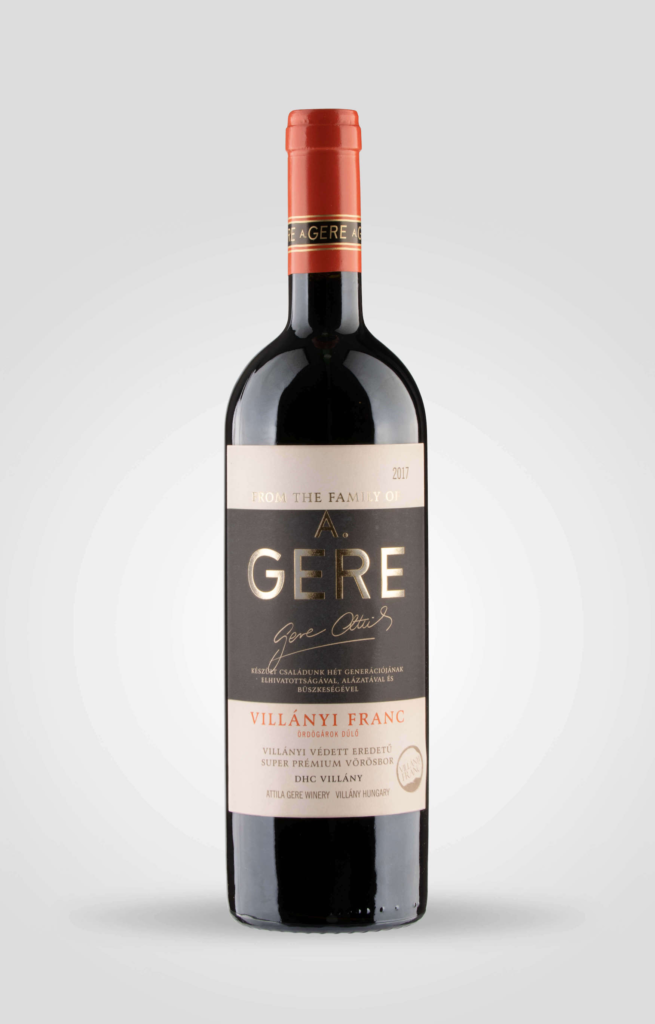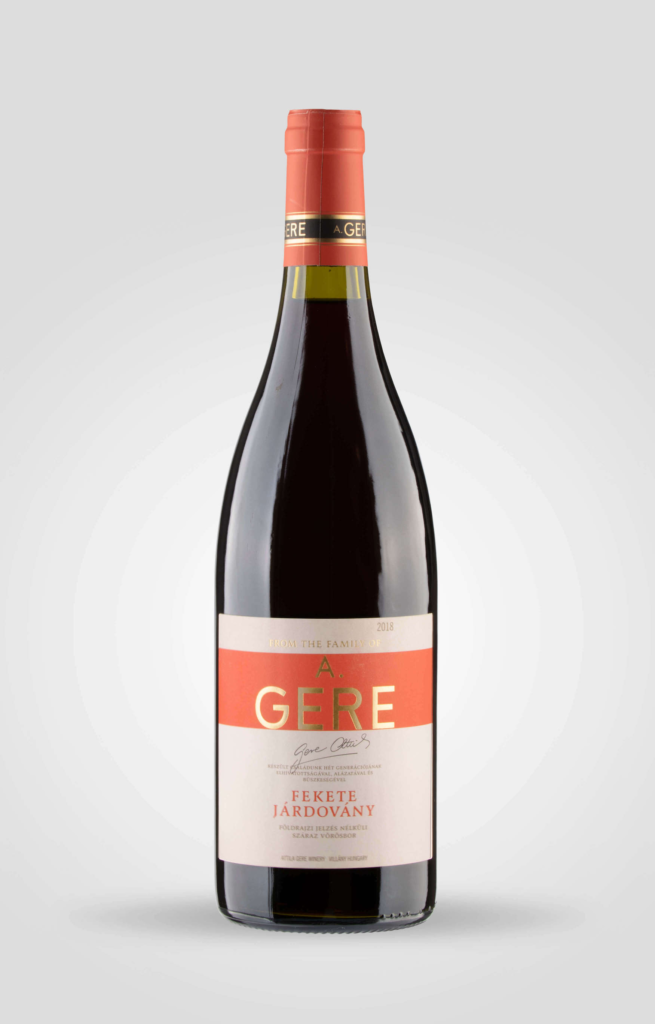Gere Winery
Villány Region
Attila Gere is an iconic figure of Hungary’s wine scene. He established the Gere Winery just after the regime change in 1991. Gere is not only one of the pioneers of quality winemaking in Hungary after the change of regimes, but he is also a pioneer in Hungarian wine tourism. During the same year that Gere founded his winery, he also established Hungary’s first winery hotel. Now Gere is synonymous with the Villány region, and Villány is synonymous with Gere. Gere was named Winemaker of the Year in 1994, a prestigious award in Hungary, and in 1997 he released the first vintage of Gere Kopar, which has become, arguably, Hungary’s most iconic red wine. These days, Gere Kopar, is one of the rare wines in Hungary that is sold en primeur (which means it is sold in advance of its release), due to its high demand. The Gere Winery has been organically farming its 70 hectares of vineyards since 2010, and they are experimenting with varieties which are unusual to the region, such as Tempranillo. They are also growing exciting ancient Carpathian Basin varieties which are close to extinction, such as Fekete Járdovány, Bakator, Purcsin, Csóka, and others.

Gere Kopar,2018
DHC Premium
Kopar is arguably Hungary’s most iconic red wine. The first vintage of Kopar was released in 1997, and since then it has become one of Hungary’s most sought after wines. It was one of the first rich, full-bodied, age-worthy wines to get local and international recognition. Kopar is not Gere’s most expensive wine, but it is, by far, his most famous. The grapes for this wine come from four different low-yielding vineyards (only harvesting 25 hectoliters/hectare!): Konkoly, Csillagvölgy, Ördögárok, and the namesake Kopár vineyard. Kopar (without an accent mark) is a trademark brand of the Gere Winery. This exceptional wine is a blend of Cabernet Franc (50 percent) and Merlot (40 percent), spiced up with some Cabernet Sauvignon (10 percent). The fermentation occurred partially in stainless steel and partially in big wooden vats with selected local yeast strains. After fermentation, the wine spent 16 months aging in small barrique barrels of which 80 percent were new and 20 percent were second-use. In the glass, this wine has a deep ruby color with intense and concentrated aromas of black and blue fruit, sweet tobacco, leather, and sandalwood. It has 14.5 percent alcohol; rich and concentrated flavors of blackberry, graphite, and dark chocolate; and a firm tannin and acid structure. This is the perfect wine to lay down and age for several years. If you like bold flavors, you will also love this wine young. Decanting is encouraged. As with every rich red wine, a high-quality steak and good friends are an extraordinary pairing.
Portugieser (Organic Selection), 2022
DHC Classicus
Since it isn’t very commonly found in Hungarian wine stores and restaurants—and almost impossible to find outside of Hungary—it will probably come as a surprise that Portugieser is one of Villány’s most planted grape varieties. This grape has a long tradition in the region, and produces easy-drinking, spicy, and somehow rustic reds, which are mostly consumed locally by the field workers. The Portugieser grape used to be called Kékoportó. But its name had to be changed when Hungary joined the EU in 2004, since it was similar to a protected product of a member country: Port wine from Portugal. However, this grape variety has no link to Portugal. It is believed to come from Austria or southern Germany. Portugieser was probably brought to the region by the Swabians who re-populated southern Hungary after the Ottoman occupation. This Organic Selection Portugieser comes from four prestigious vineyards: Csillagvölgy, Fekete-hegy, Konkoly, and Ördögárok. This wine was fermented in stainless steel tanks, followed by four months of aging in used 5,000 liter oak casks. In the glass, this Portugieser has a beautiful opaque purple color. On the nose, it has flavors of juicy cherries, violets, sweet spices, and a hint of animality. It has 11.5 percent alcohol, gentle tannins and acidity, and a cocoa powder-like finish. This is a refreshing red wine that pairs perfectly with charcuterie (and even pepperoni pizza) or something as simple as a grilled cheese sandwich.
Villányi Franc (Ördögárok Vineyard), 2018
DHC Super Premium
Cabernet Franc has come to represent the Villány region. This variety is so strongly attached to the region that, if it is produced in a Premium or Super Premium style, it can not even be labelled as simply Cabernet Franc. It becomes a Villányi Franc. The region’s love affair with the grape goes back to the beginning of the 2000s, when the late Michael Broadbent (a Master of Wine), visited the region. After tasting all of their wines, he wrote an article in Decanter magazine declaring that Cabernet Franc had finally found its home in Villány. Villány’s appellation system, DHC (Districtus Hungaricus Controllatus), distinguishes three levels of quality for the wines of the area: Classicus, Superior, and Super Premium. This wine is a Super Premium, which is a category created exclusively for Cabernet Franc. It requires grapes to come from extremely low-yielding vineyards (maximum 35 hectoliters/hectare) and to undergo at least two years of aging (including one year in oak barrels). These grapes were sourced from the Ördögárok vineyard, one of the most highly regarded in the region. Ördögárok means “basin of the devil” because it is a south-facing basin, surrounded by mountains in a way that traps the warm air arriving from the Adriatic sea. This vineyard produces the region’s most concentrated, rich, full-bodied wines. With an extremely low yield of only 25 hectoliters/hectare, this concentrated wine bursts with aromas of violets, juicy blackberries, chocolate, and cocoa powder. On the palate, it is a full-bodied wine (14.5 percent alcohol) with hazelnut, blackberry juice, and floral flavors. This wine can benefit from some additional aging, but it is also very delicious right now. Steak with a spicy, peppery sauce can be a great pairing, as well as charcuterie, or spicy jam.
Olaszrizling, 2019
DHC Classicus
The Villány region is best known for its concentrated, full-bodied reds. But it also produces refreshing whites, like this 100 percent Olaszrizling. Attila Gere has a lot of experience making these light, fresh, and fruity wines in the region through his partner winery, Gere & Schubert, which focuses exclusively on this style of whites and rosés. The grapes for this wine are sourced from around the Vokány and Nagyharsány towns. They come from 35 year-old vineyards, which yield lower quantities of fruit than usual (around 50 hectoliter per hectare), which is an essential feature of a quality wine. This Olaszrizling was fermented and aged in stainless steel tanks, so that it would retain freshness and elegance. It has aromas of citrus, pear, and flower blossoms. On the palate, this is a fresh wine, which is soft and smooth due to its low alcohol level (11.5 percent), achieved by harvesting the grapes early (in mid August). This refreshing and easy-drinking wine has the classic almond-like finish that Olaszrizling wines are known for. Enjoy it with grilled fish or vegetable cream soups.
SOLD OUT
Fekete Járdovány, 2018
This is a really one-of-a-kind wine, made from an ancient Carpathian basin grape which is hardly grown anywhere. This is probably the only commercially-available wine made from this grape. It’s believed that Fekete Járdovány was a popular variety in southern Hungary before phylloxera destroyed most of Europe’s vineyards at the end of the 19th century. This variety almost went extinct. The Vine and Wine Research Institute of Pécs is well-known in Hungary for preserving ancient Hungarian and Central European wine grapes. The Gere Winery started working with the institute to revive seven rare Carpathian Basin varieties, including this one. In 2004 they planted just two rows of each of the seven varieties. After a few years, Fekete Járdovány showed great potential, so they decided to plant it in two of their premium vineyards: Csillagvölgy and Ördögárok. 2011 was the first vintage produced exclusively out of Fekete Járdovány. Since it is not included in the list of grape varieties approved under the Villány wine appellation, it is labeled simply as red wine without indication of origin. In the glass, Fekete Járdovány has a pale cherry-red color with pink reflections. It has aromas of sweet vanilla, caramel, ripe black cherry, and coffee (due to the 10 months it spent aging in small oak barrels). With 13.5 percent alcohol, this reminds us of a Nebbiolo-based wine, with its pale color, elevated tannins and acidity, long finish, and flavors of caramel, cherry, and coffee. This wine represents the effort of generations of winemakers and ampelographers to revive ancient grape varieties. And we are thankful for that!
SOLD OUT
Rosé, 2019
DHC Classicus
Rosé wines have become one of the styles that young Hungarians enjoy the most. This has led to an overflow of rosé, produced all around the country! Some of those rosés can taste overly fruity, artificial, and not at all food-friendly. Gere’s rosé is the opposite. It has restrained and elegant aromas of cranberry, rose petal, pomegranate, and watermelon, combined with a juicy acidity and a light mouthfeel. This wine feels alive on the palate, with zesty flavors and a light creaminess in the finish. This rosé is a blend of Kékfrankos (Blaufränkisch) and Pinot Noir, sourced from the cooler-climate Siklós and Nagyharsány areas. It was fermented and briefly aged in stainless steel tanks prior to bottling. This is a very food-friendly rosé, with 12.5 percent alcohol. The thought of this wine next to a melon and prosciutto salad just makes us smile. It’s a perfect brunch wine, paired with smoked salmon and cream cheese bagels.
SOLD OUT





